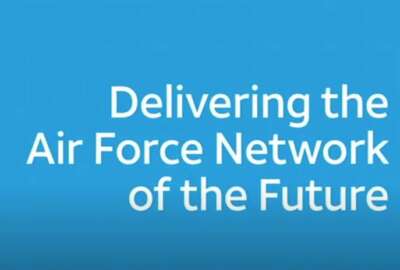
Argonne National Lab’s future of work: Decades in the making
A look at how the pandemic has impacted the Argonne National Laboratory's workflow and influenced its "Future of Work."
The theme of the 1933 Chicago World Fair was “technological innovation.” A hundred years later, fairgoers might be impressed with how the future has turned out at the Argonne National Laboratory. Formed in 1946, it was the first such national lab of its kind in the United States, currently operated by the University of Chicago and the Department of Energy.
Whatever the visionary scientists and fair organizers imagined in 1946 or 1933, it probably did not include people working on laptops in their kitchens and rumpus rooms, trying to survive a similar plague that slammed the country a couple of decades earlier.
“Argonne is a federally-funded research and development center,” Roland Varriale, a cyber security analyst said on Federal Monthly Insights — The Future of Work.
A lot of the R&D is in the natural and applied sciences and technologies, running the spectrum from material science to physics to math to chemistry.
“You have a diverse group of scientists working on things. So we get incorporated within other people’s work and we reach out to incorporate other scientists within our work as well, to strengthen the depth of the research that we can do,” Varriale said on Federal Drive with Tom Temin.
The pandemic, like workplaces across America, has changed the present-day workflow, and as many expect, it will change the future of work. Argonne already danced with the future before COVID hit.
“I don’t have exact telework numbers, but we do have alternative work schedules and telework incorporated within our normal working procedure. So I was accustomed to working usually two days from home a week. In addition, sometimes we have to travel as part of our job. So the infrastructure that we use at the lab is relatively distributed. So we have some cloud technologies, we have some other secure implementations that we’ve used to access our work files, other resources we need, create connections to things that we need to have access to in a range of environments and not just in one static place,” Varriale said.
But for the past six months, working from home has become routine. Some Argonne employees with mission-critical research still come to the lab, but the now-normal social-distancing, hand-washing, and mask-wearing practices are in place.
“I’m teleworking until further notice. A lot of my work can be done remotely, which is nice. So I have different facets of my research that I’m focusing on more because they’re available to me in this remote capacity, where I can’t have hands-on access to charging infrastructure right now. Unfortunately, I don’t have very powerful charging infrastructure by my condo,” Varriale said.
As you might guess, Argonne National Laboratory is up-to-speed with the latest technology to pull-off its mission during the pandemic. But as someone who works in the in the cybersecurity realm, Varriale will not get too specific.
“We have a lot of different technologies that we use. Most of them operate in a similar way to VPN, where you’d be encrypting the traffic that’s being transmitted between you and the campus. So there are a couple different ways of doing it. I’m not a big fan of naming like individual technologies we use because, as a security analyst, if someone found a vulnerability with one of those things, that would put us at risk. But we do use different things to encrypt both the data while it’s on our computers stored at rest and then in transit to communicate securely,” Varriale said.
An academic and research atmosphere like you find at Argonne requires collaboration and even professional networking. Along with so much else, the pandemic has changed that environment as well.
“I see a lot of it moving to virtual. There have been a lot of virtual conferences, a lot of virtual meetups. Some of our annual reviews for different subject-matter areas have been completely virtualized and moved to like a Zoom platform. So I don’t think that has waned very much. It’s still very prevalent and the quantity seems to at least have stayed the same probably increased. I’m getting more notices about mini conferences, webinars and things like that,” Varriale said.
The key now, Varriale said, is incorporating new tools into one’s work capabilities. You need to understand how emerging technologies and remote technologies can help you get the work done.
“I was recently in a week-long training and on the side, I was chatting with probably three or four people at the same time, exchanging contact information, understanding where they were coming from and seeing how we could help each other in the future if our paths crossed. So I think that’s an active part that you may need to take a different approach towards it during remote work, but it can exist and flourish. It just may take a different direction,” Varriale said.
At the end of the day, before the pandemic, during the pandemic and after the pandemic, Varriale said you cannot cut corners on security.
“We look at security as a requirement, so building in security as a functional requirement when we’re looking at technologies. We’re not just using it because it’s available or it fits a need, but looking at what is the overall risk with using this technology. Are we using it appropriately? And is this fitting all the needs that we require of it?”
Copyright © 2025 Federal News Network. All rights reserved. This website is not intended for users located within the European Economic Area.
Peter Musurlian is a producer at Federal News Network.
Follow @PMusurlianWFED





